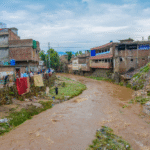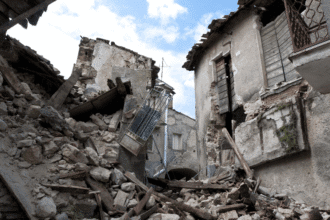A long-missing man’s frame has been found in Pakistan’s far-off Kohistan vicinity, where changing weather patterns are accelerating glacier melt. The body, remarkably nicely preserved and nevertheless clothed, changed into located in Lady Valley, located in eastern Pakistan. A local shepherd stumbled upon the frame at the same time as exploring the region, which had been exposed due to fast glacial melting. This discovery sheds mild on the developing environmental problem of glaciers softening and its long, far-reaching consequences.
What Does the Discovery Tell Us About Glacier Melt?
The body discovered within the melting glacier was identified as Naseeruddin, a man who had long past for a long time since June 1997. He had fallen right into a glacier crack while journeying with his brother. Experts attribute the preservation of the body to the rapid freezing because of the extreme cold of the glacier. This technique, known as mummification, takes place whilst the frame is trapped within the glacier, preventing decomposition because of a loss of moisture and oxygen.
The location, previously covered in deep snow, has visible significantly fewer snowstorms in recent years. As a result, glaciers are exposed to direct daylight, accelerating the rate at which they are melting. This occasion is a stark reminder of the role glacier softening plays in revealing hidden parts of the past, and the developing environmental issues tied to climate change. Here is the link to our article on Climate Policy Leadership
How Does Climate Change Influence Glacier Melt?
Experts have raised alarms approximately the rapid pace of glacier retreat, noting that changing climate patterns are causing glaciers to lose their mass. Increased temperatures and reduced blizzards contribute without delay to the extended glacier melt. These adjustments aren’t best reshaping landscapes, however additionally revealing lengthy-buried historic stays, along with the frame of Naseeruddin, which remained untouched through the ravages of time for decades.
Scientists suggest that the continued environmental changes will have further repercussions, as glaciers continue to shrink, disrupting ecosystems and neighborhood groups. The discovery of the mummified frame is a chilling reminder of the profound and lasting effects of global warming.
What Role Do Melting Glaciers Play in the Future?
The case of Naseeruddin’s body points to the broader environmental venture of melting glaciers around the area. As those frozen rivers of ice disappear, they reveal formerly hidden components of our herbal global environment, together with ancient occasions. The discovery also underscores the immediate need for increased cognizance and movement on the consequences of glacierssofteningg especially in mountainous regions like Kohistan, where local populations depend upon these glaciers for water and agriculture.
In addition to human remains, melting glaciers reveal different artifacts and remnants of preceding civilizations, which could provide beneficial insights into ancient history. However, the disadvantage is the lack of critical water sources and the increase in natural disasters related to glacial melting, which include floods and landslides. Here is the link to our article on environmental hazards.
Final Thoughts: The Urgent Need to Address Glacier Melt
The discovery of a frame after 28 years in Pakistan’s Kohistan location is a robust reminder of the ways glacier melt is exposing the excessive results of weather exchange. Not only is this a historical revelation, but it also serves as a be-careful call approximately the immediate need to deal with environmental problems impacting glaciers worldwide. As glaciers continue to soften at remarkable rates, the results for ecosystems, water resources, and groups are profound.








